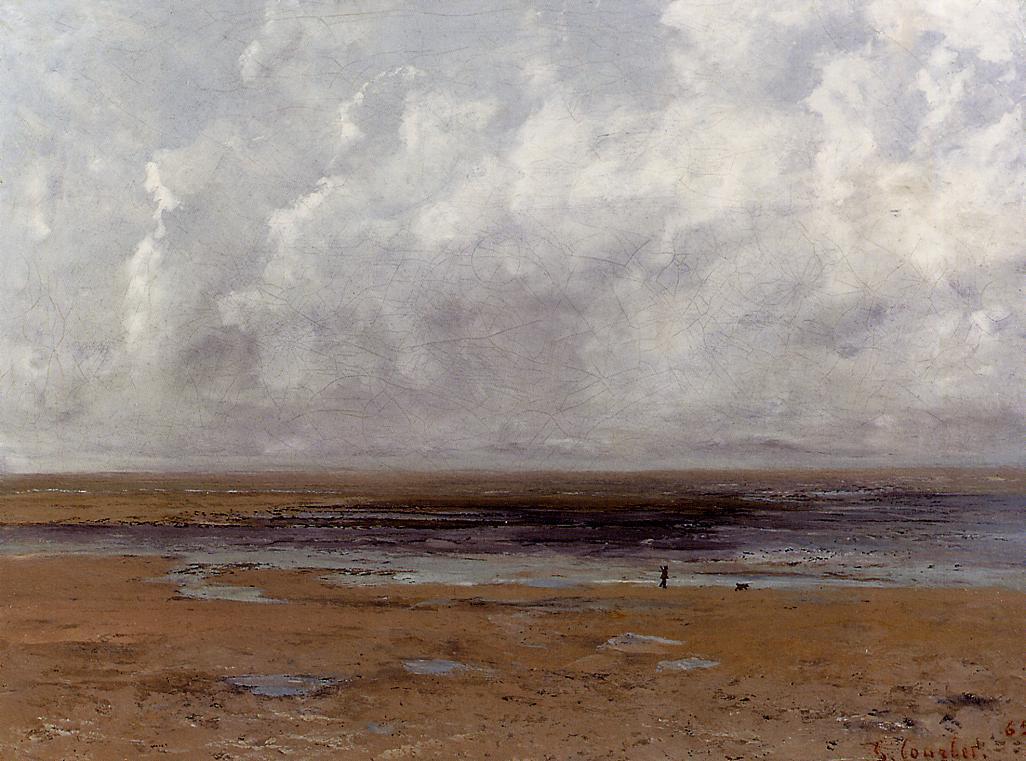One who is
too eager to befriend nature will get a cold shoulder. Little wonder. Who can
possibly read into nature, so inscrutable and silent? But any human creature,
feeling belittled as he is under a sky stretching afar to the infinity, inspires
in him suddenly a quixotic urge to conquer the unassailable, to provoke the
laconic nature, who sleeps seemingly soundly but with eyes open.
Every day
the person wakes up to a scenery immutable from the day before, saves that
periodically a stroke of lightening galvanizes the slumberous earth, the
ear-splitting roar sounds to him like the mocking laugh at his futility of
power. Or, fortunately enough, scant stars embellish the darkening sky; their flimsy
light nonetheless a sufficient comfort to his desolate soul, disheartened from
yet another prolonged day of battles, against the impossible, against the
unknown.
Like his
genre paintings, Gustave Courbet’s landscape scenes are rarely innocent or
peaceful. They all seem to be impregnated with meanings- some are intricate
like unsolvable riddles, others a shade too suspicious or sinister, still
others, thanks to their age-old wisdom, mask well their true intentions, and
appear effortlessly in what the human creatures perceive with their naive eyes:
a sleeping beauty. Nature in Courbet’s paintings is never static.
In The Beach at Trouville at Low Tide
(1865) pillars of clouds come from nowhere, flit and traverse to a destination
indefinite. They seem to be driven by the phantom horses, speeding towards the
only human creature on this vast earth. The colours of the soil are a marked
contrast to the pallor of the heaven- these two do not mingle as they should
be. Clouds are blown by frantic winds but the earth stays stubbornly
unperturbed. Within such an intense war zone between the celestial and the
terrestrial a lone creature morosely walks.
Nature is
restless. Once the human creature is acclimatised to his surroundings he obtains
guiltlessly the wisdom Nature accumulates. He ceases stomping the ground or
crying aloud in anger and distress, but simply whispers, so dimly that no
sooner Nature becomes indifferent to his voice, and mentally wiping out his
presence altogether. Gratified with the hard-won peace he finally settles
himself with the human creature recalls what he once heard from his ancestors,
that there is a holy land not too far-off which is blessed with the absence of
all echoes and undue noises. The human creature toys with the imagined vision
of this holy land tirelessly in his dreams, sweet or fitful.
Does he resent
that, in dearth of a guidance from Nature, he never reach the holy land he so
pines for? His obsession tails off without traces as he consciously takes a
drink from Lethe. Nature prophesies it all but cares little to inform. The
human creature roams the vast earth still everyday, and with unopened eyes he
always stares towards the infinity. Beneath the earth only the dead groan.

Comments
Post a Comment